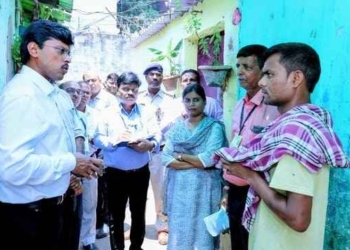National News Desk, In the cabinet meeting held on 24th August under the chairmanship of Prime Minister Narendra Modi, Unified Pension Scheme (UPS) has been approved to provide fixed pension to the central government employees after retirement. For years, the feeling of opposition towards OPS and NPS that was visible in the minds of millions of government employees of the country has been put to an end by PM Modi’s ambitious Unified Pension Scheme (UPS).
About 23 lakh employees of the Central Government will get the benefit of the Central Government’s Unified Pension Scheme (UPS). If government figures are to be believed, the implementation of this scheme will increase the additional burden of about Rs 6,250 crore per year on the government treasury. The Modi government is being praised everywhere from Kerala to Kanyakumari for implementing the Unified Pension Scheme by government employees. According to the report of news agency PTI, Shiv Gopal Mishra, Secretary of Joint Consultative Machinery (JCM), a joint forum of government employee organizations, said that he was invited by the Prime Minister. He said that this was the first time that JCM was invited by a Prime Minister. According to Secretary Mishra, this meeting was very good and the PM also welcomed his suggestions towards the development and social upliftment of his 32 lakh government employees very quickly.
According to a report of the NDA Cabinet and the Central Government, after the retirement of lakhs of government employees of the country, this pension scheme not only provides a reliable security for the pensioners but also strengthens cooperative federalism. This is the same principle which PM Modi and his administration have been continuously supporting for years. This scheme (UPS) will prove to be an important link in securing the financial future of lakhs of government employees of the country.
Unified Pension Scheme has a provision for assured pension, under which if an employee has worked for at least 25 years, he will get 50 percent of his average basic salary of 12 months before retirement as pension. For example, if the average basic salary of a government employee is Rs 50,000 before retirement, he will get a pension of Rs 25,000 every month. However, if someone’s service period is less than 25 years, his pension will also be reduced accordingly. PM Modi has also made a provision in UPS that if someone has worked for 10 years or less, he should be given a fixed pension of at least Rs 10,000.
Along with this, there is also a provision of family pension in UPS, which will be 60 percent of the basic salary of the employee. Family pension will be given to the family of the employee after his death. For example, if an employee was getting a pension of Rs 30,000 every month, then his wife will get 60 percent i.e. Rs 18000 as pension. Employees appointed after 1 January 2004 or those who retire by 1 April 2025 will also get the opportunity to choose either NPS or UPS.
Based on the core principles of pension reform established by former Prime Minister Atal Bihari Vajpayee, PM Modi’s scheme balances employee benefits with fiscal responsibility without compromising on the contributory and funded nature of pensions. UPS is a stark contrast to the old pension scheme or OPS, as OPS burdened state governments with unsustainable financial commitments. States like Rajasthan, Chhattisgarh, Jharkhand, Punjab and Himachal Pradesh had returned to OPS some time back under non-NDA leadership, which was criticised by experts across the country as a fiscally irresponsible move. The Reserve Bank of India (RBI) had highlighted the serious consequences of such decisions and said that the fiscal cost of returning to OPS would be very high, potentially increasing pension liabilities by four times compared to the National Pension System (NPS).
The Modi government’s UPS scheme offers employees a prudent option that addresses their grievances while ensuring that state and central governments maintain the fiscal levels necessary for critical capital investments. By increasing the government’s contribution to 18.5% of basic pay and maintaining the employee’s contribution at 10%, UPS bridges the gap between assured pension and pension fund earnings, thereby securing the future of retirees.
By adopting UPS, states can continue to invest in infrastructure and social welfare programmes without threatening their financial stability. The Modi government’s focus on transparency and fiscal prudence further strengthens the foundations of cooperative federalism along with curbing off-budget borrowing.
Ultimately, UPS is a great symbol of the Modi government’s commitment to balance economic growth with social security. This is not just a pension reform, but a comprehensive strategy to ensure that India’s states and its people have the financial resources they need for a prosperous future. As the country grows over time, UPS will play a vital role in maintaining this balance, ensuring the country’s financial health and securing the financial future of millions of government employees.










